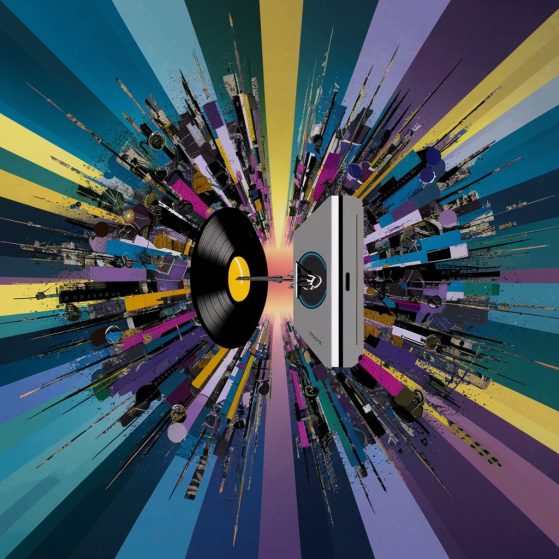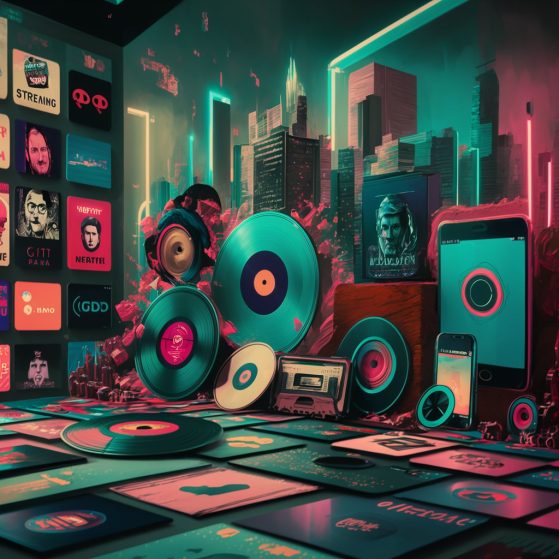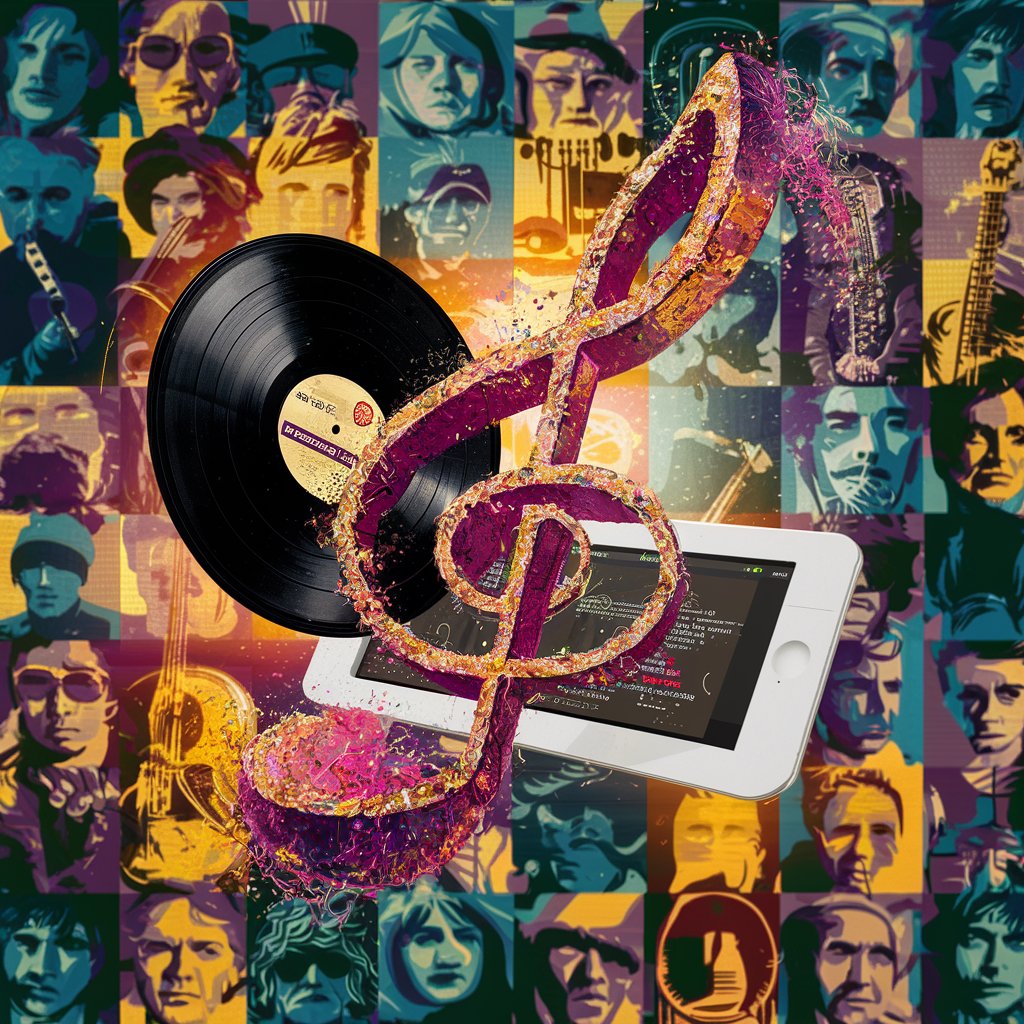Understanding Music Royalties in the Pre-Streaming Era
Origins of Music Royalties
Music Royalties, in the pre-streaming era, had their roots in the early 20th century with the rise of sheet music publishers and mechanical royalties. Mechanical royalties were fees that music publishers paid to songwriters whenever a copy of their work was made. For instance, when a record label produced an album, the songwriter would receive a payment for each copy produced.
The Role of Performing Rights Organizations
Performing Rights Organizations (PROs) such as ASCAP, BMI, and SESAC became crucial in the collection and distribution of royalties to artists. These organizations ensured that songwriters and composers received payment whenever their music was performed publicly. This could range from a live concert to a broadcast over the radio. Each PRO had specific agreements with broadcasters and venues, determining the royalty rates for performances.
Physical Sales and Synchronization Royalties
With the advent of physical music sales through vinyl records, 8-track tapes, cassettes, CDs, etc., artists and songwriters began earning royalties from these sales. These royalties were typically a fixed amount paid out per unit sold, and they came directly from the retail sales of these music mediums.
In addition, synchronization royalties became a significant revenue source for artists. This type of royalty was earned when music was synchronized with visual media, such as film or television. Fees were negotiated on a case-by-case basis and often provided substantial income to the artists.
In this era before streaming, understanding and navigating music royalties was certainly complex. However, it laid the groundwork for the even more nuanced world of music royalties in our current streaming era.
Transition from Physical Sales to Digital Streaming

The Advent of Digitalization in Music
The initiation phase of music’s transition from physical sales to digital streaming marked a significant shift in how consumers engaged with music. With the proliferation of the internet and advancements in technology, music started to migrate from tangible forms like vinyl records, cassettes, and CDs to digital files readily available online. The emergence of popular platforms such as iTunes in 2001 provided listeners with the convenience of purchasing individual tracks instead of entire albums, an option that was impossible with physical media.
Streaming Technology and Its Impact
As technology continued to evolve, new methods for music consumption emerged, paving the way for streaming services. Unlike the purchase model adopted by platforms such as iTunes, these services provided users with instant access to vast libraries of music for a fixed monthly fee. Platforms like Pandora and Spotify rapidly gained popularity, offering customized playlists and recommending music based on users’ listening habits. This shift represented a substantial departure from traditional sales models, changing not only how listeners consumed music but also how artists and record labels generated income.
Effect on Music Royalties
With the rise of digital streaming platforms, the calculation and distribution of music royalties underwent a significant transformation. In the era of physical sales, artists earned royalties primarily from the sale of records and CDs. However, digital streaming platforms introduced a different model, where royalties were calculated based on the number of plays a track received. This change meant artists no longer relied on album sales for income, leading to a renewed emphasis on single-track popularity and playlist placements. This rapid shift has posed significant challenges for artists, record labels, and copyright holders, who have had to adapt to these new paradigms while negotiating fair compensation for their work.
New Models of Music Royalties in the Streaming Era
Transition from Traditional to Streaming Platforms
The advent of streaming services has completely metamorphosed the way in which music royalties are generated and distributed. Traditional models, where artists were rewarded based on physical sales or radio plays, are getting rapidly obsolete. Streaming platforms mark a shift from ownership to access. Here, royalties are typically calculated based on the total number of streams a song garners as a proportion of total streams on the platform during a given period. These platforms constitute a substantial portion of an artist’s income today.
Per-Stream Royalty Model
In the streaming era, the most prevalent royalty model is the “per-stream” model. This model refers to the process whereby every time a user plays a song on a streaming platform, a fixed amount is accrued to the rights holder. This per-stream rate, however, varies considerably across different platforms. For example, Napster’s rate per stream is significantly higher than that of Spotify or YouTube. However, these figures could be misleading as the total earnings depend not only on the rate but also the total number of streams.
User-Centric Payment System
An alternate and emerging model of music royalties in the streaming era is the “User-Centric Payment System” (UCPS). This model proposes that royalties should be distributed based on individual listener’s behavior rather than the total number of streams on the platform. In this approach, the monthly subscription fee paid by a listener would directly benefit the artists they listen to. Although not yet widely adopted, some claim the UCPS would be a more equitable distribution system for all artists, particularly those with niche audiences. However, practical implementation of UCPS faces many challenges including the complexity of data tracking and potential conflicts with existing contracts and legal frameworks.
These new models illustrate that the music industry is continuously evolving to adapt to the digital revolution. As streaming becomes more pervasive, it’s likely that royalty models will continue to change and adapt to ensure artists are fairly compensated for their work.
Impact of Streaming Platforms on Music Royalties

Streaming Platforms and Artist Payments
With the advent of music streaming platforms such as Spotify, Apple Music, and Tidal, the method in which artists are compensated for their work has fundamentally changed. Traditionally, artists were paid a set amount each time their song was sold or played on the radio. Today, these platforms have transitioned to a pay-per-stream model, where artists are compensated each time one of their songs is played. This revenue is distributed based on the proportion of total plays an artist receives, often resulting in fractions of a cent per stream.
The Conversion from Traditional to Streaming Royalties
The shift from traditional sales to digital streams has had a profound impact on how artists receive royalties. It has created a gap between older, more established artists who still have substantial physical and download sales, and newer artists who predominantly generate revenue from streaming. This gap is further amplified by the fact that the per-stream royalty rates are significantly lower than the revenue received from traditional album sales or downloads.
Implications of the Pay-Per-Stream Model
The adoption of the pay-per-stream model by streaming platforms has brought with it a host of implications for music royalties. Critics argue that this model benefits the most popular artists at the expense of lesser-known musicians. Since the distributions are calculated on the basis of total plays, globally famous acts like Drake or Ariana Grande end up amassing a large portion of overall streaming revenues. Meanwhile, niche artists or those with a smaller following may find it challenging to generate substantial income from streams alone. This has led to debates over the fairness and sustainability of the current model in adequately supporting a diverse range of music creators.
Future Predictions for Music Royalties in the Digital Age
The Expansion of Direct-to-Consumer Models
It is expected that in the future, we will see an increase in direct-to-consumer models. Musicians, especially independent ones, are likely to opt for platforms that allow them to connect directly with their audience. This change will be driven by musicians’ desire for greater control over their content and revenues. It also promises to counter the current imbalance where a significant portion of music royalty revenue goes to intermediaries rather than artists.
Improved Precision in Royalty Calculations
As technology continues to evolve, advances in data tracking and analysis techniques will likely lead to more accurate royalty calculations. In an era where a single song can generate revenue from multiple sources—from streaming to vinyl sales—it’s going to become increasingly important to have precise methods of tracking and distributing royalties. The application of blockchain technology is one of the potential solutions that could revolutionize the royalty payment system by ensuring transparency and accuracy in royalty calculations and payments.
New Revenue Streams and Licensing Models
With the evolution of new media platforms and technologies—such as virtual reality, augmented reality, and gaming—new opportunities for monetizing music are emerging. As these platforms grow in popularity and accessibility, they are likely to become a lucrative source of royalties for artists. However, these new platforms will also necessitate novel licensing models, pushing the music industry to rethink its traditional structures and consider flexible, platform-specific licensing solutions. This shifting landscape could potentially lead to a reformation in the distribution of music royalties, with artists gaining a greater share of revenue.
Looking for a trusted and knowledgeable agency to help market your music career?
Contact us at + 1 626 872-5151 or info@flourishprosper.net
Or Checkout our website at flourishprosper.net




